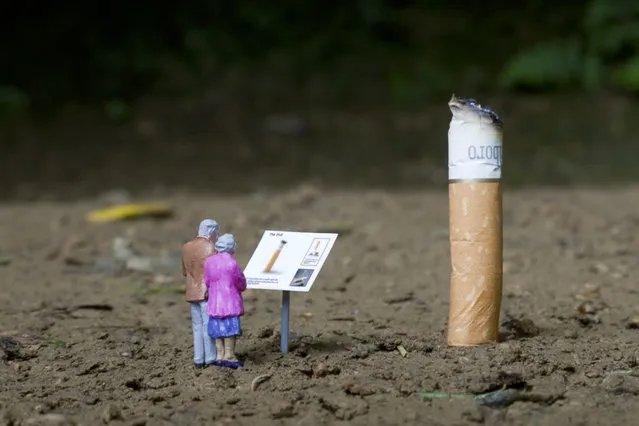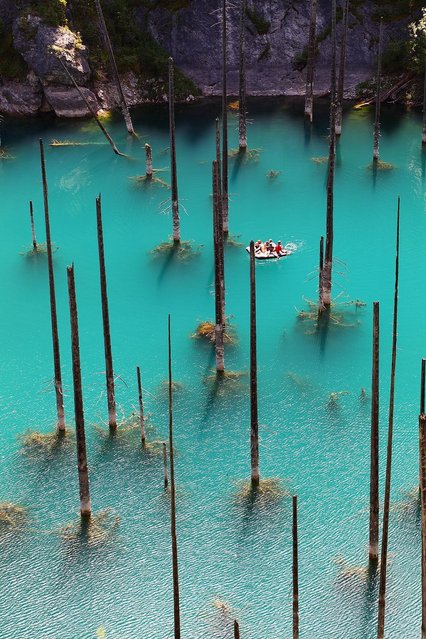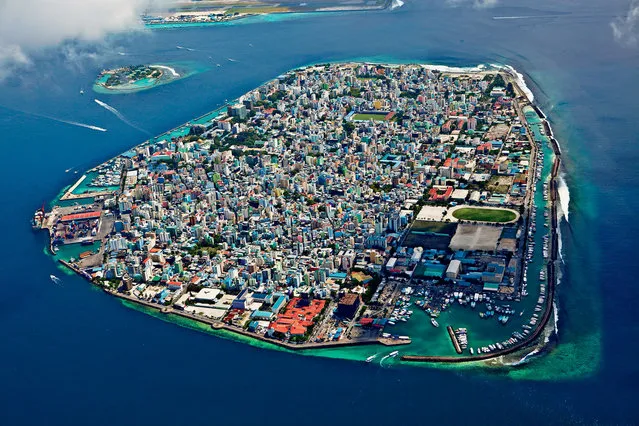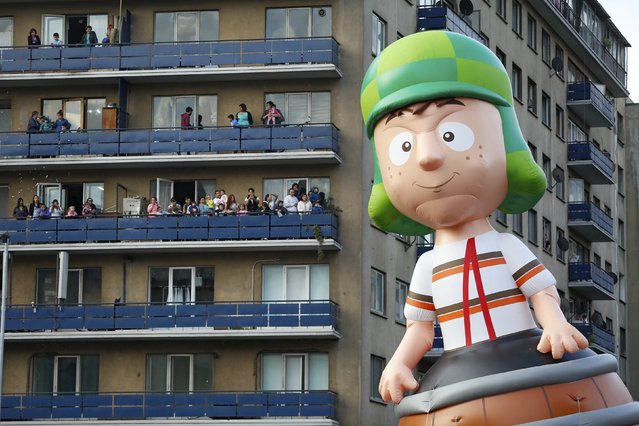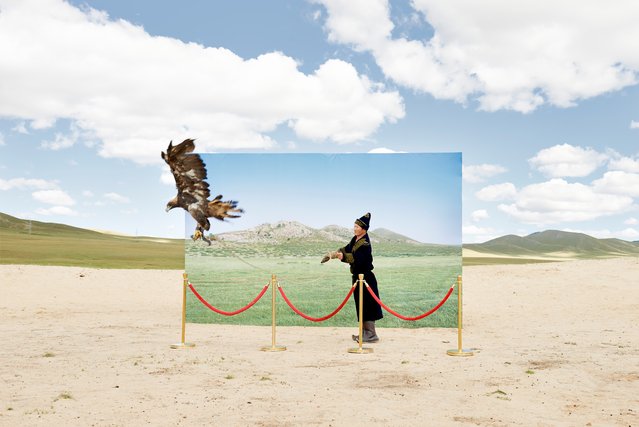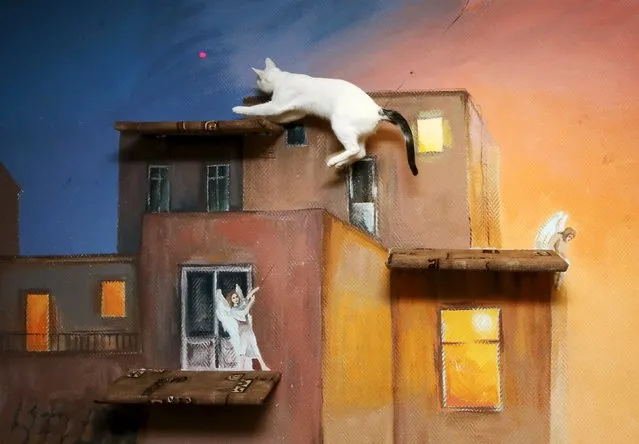
A cat jumps from a shelf to catch a light beam at the “Kis-Kis” Cat Cafe in the Siberian city of Krasnoyarsk, Russia, July 6, 2015. A local animals rights group founded the shelter for dozen of homeless cats and combined it with the cafe, where visitors can communicate with animals for hourly fee in addition to drinks, table games, books and WI-FI. (Photo by Ilya Naymushin/Reuters)
